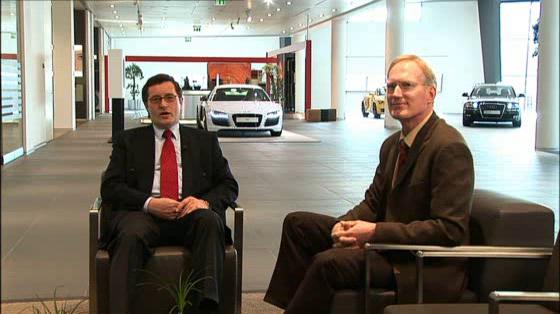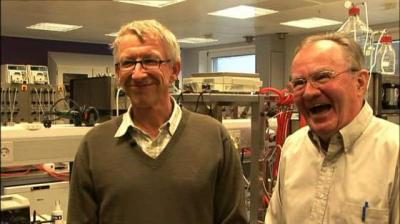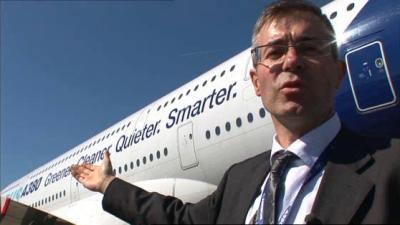Norbert Enning, Ulrich Klages, Heinrich Timm, Gundolf Kreis, Alois Feldschmid, Christian Dornberg, Karl Reiter
Aluminium automotive body frame
European Inventor of the Year 2008 in the category "Industry"
There are several ways to make automobiles more fuel-efficient; new power sources are one option, as are changes in transmission systems. But at the most basic level, the lighter a car the less gasoline it will use. This is where the aluminium car frame system developed by Enning and his team enters the picture.
Aluminium has been around for decades, but car manufacturers had shunned it in favour of steel in frame designs on the premise that "the heavier, the stronger." Many designers doubted that aluminium was resilient enough to perform under pressure. Merely substituting steel with aluminium was not an option. Without major design changes, aluminium would have bent at critical weight distribution points. To optimise the distribution of weight, Norbert Enning and his team had to completely re-think the concept of automotive frame design.
In 1993, Audi patented the aluminium car frame system, including respective methods of mass production. One year later, the automotive company introduced the world's first-ever mass-produced car with an all-aluminium body - the Audi A8. Since then, the frame system has been marketed as the Audi Space Frame (ASF) with major success and continuous improvements.
Direct benefits of the technology include better fuel efficiency, increased road handling, better cornering characteristics and ease of repair. Tests have proven that the frame's high rigidity also offers better crash protection than steel frames. In terms of durability, aluminium is the only corrosion-free material on the market. With a high degree of pliability, aluminium also offers designers more possibilities for shaping new, more efficient parts.
Since Audi opened up the possibilities of aluminium as car body material, other manufacturers have followed suit.
How it works
Enning's invention is best described as a self-supporting frame in which all components such as castings, profiles and panels are part of an integrated weight-bearing system. As each part "carries the other", the frame achieves maximum stability at minimum mass. Each component fulfils a number of functions, such as supporting other parts or serving as part of numerous cross-sections. As they were designing this intricate system, Enning's team members realised that the multi-tasking approach required fewer parts - more than 17 percent less - than prior frame designs.
Contact
European Inventor Award and Young Inventors Prize queries:
european-inventor@epo.org Subscribe to the European Inventor Award newsletterMedia-related queries:
Contact our Press team#InventorAward #YoungInventors


